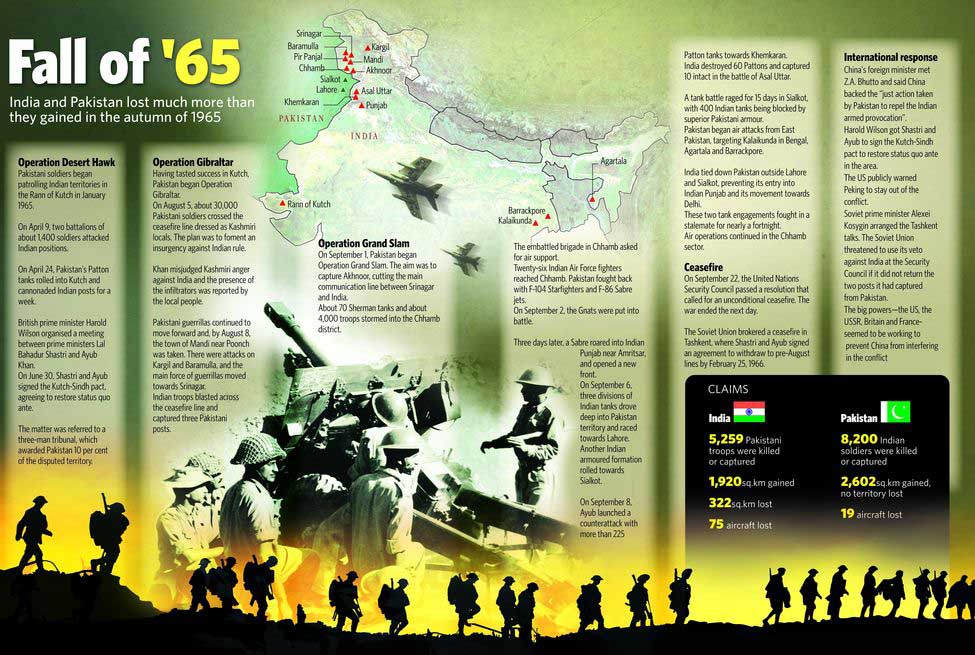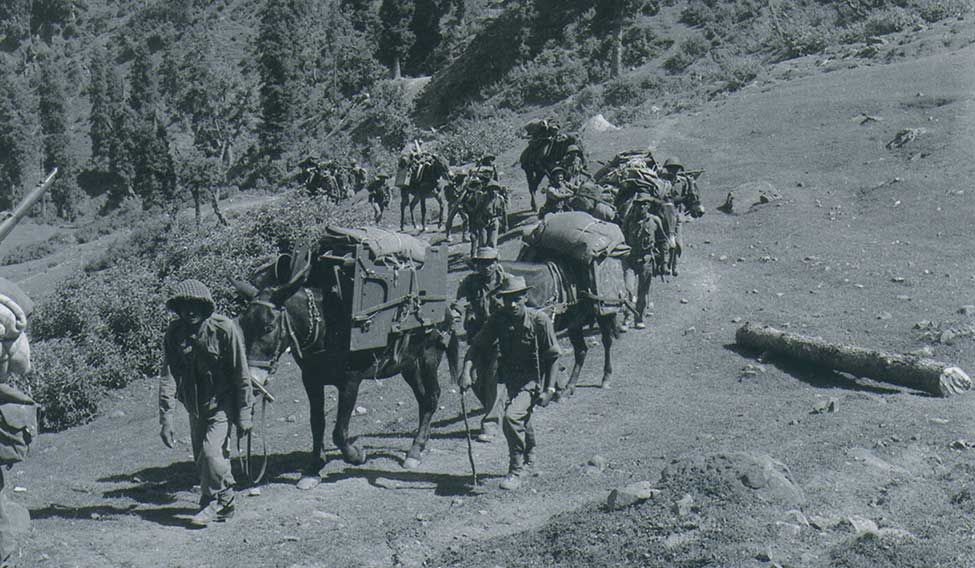It was not in 1999 that the valleys of Kargil boomed with artillery shelling for the first time. Twice in 1965, Indian soldiers drove out the Pakistanis from its peaks, a vantage point the Pakistanis used to attack Indian positions and supply lines in Ladakh.
In May 1965, Pakistani troops, bolstered by their success in the Kutch area, regularly violated the ceasefire along the Jammu and Kashmir border. The supply road in Ladakh was frequently targeted by them from their positions at Point 13,260 and Black Rocks. Gen J.N. Chaudhuri and his Western Army commander Lt Gen Harbaksh Singh decided to get proactive in the Kargil sector. Like in the 1999 war, the 121 Brigade played an important role here as well. With the enemy keeping a watch on all its activities, the brigade made preparations for the attack only at night and no civilians or ponies were employed. The brigadier, V.K. Ghai, chose the 4 Rajput for capturing Point 13,260 and peaks 1 and 2 of the Black Rocks feature; it was decided to launch the offensive on the night of May 16.
Walking in single file, the Indian troops managed to reach within 90m of the Pakistani bunker but faced heavy mortar attack on being spotted. The Rajputs, however, shot back. When company commander Maj B.S. Randhawa was killed, the unit's second-in-command, Lt Col Sudarshan Singh, continued the assault.
The artillery, as in 1999, was pounding the Pakistani positions heavily, and within eight hours the Pakistanis had to abandon their well-defended posts, leaving behind heavy ammunition and other supplies along with their dead. Pakistan launched major attacks on Indian posts in Kargil on May 19 but was beaten back, losing more than 40 of its troops.
However, the heights captured by the Indians had to be returned on June 30 after the United Nations assured the safety of the Srinagar-Leh road. The assurance did not hold for long as the Pakistanis returned to Kargil and its nearby heights in August. They started firing again from Point 13,260, which had been returned to them in June.
The Army brass decided that the heights had to be recaptured, and this time the task was assigned to the 17th battalion of the Punjab Regiment, which was based in Kargil. The commanding officer of the unit was asked to be prepared to capture Point 13,260 complex along with Black Rock peaks and Saddle features.
The pickets of the battalion noticed that the Pakistanis were patrolling the complex only in the day time. The unit was asked to capture the features by early morning of August 15. The operation commenced at midnight on August 14 and complete radio silence was maintained to prevent detection. The three platoons under Major Balwant Singh managed to reach the three features and captured the heights without suffering a single casualty.













